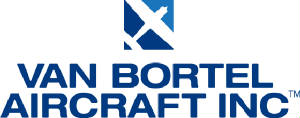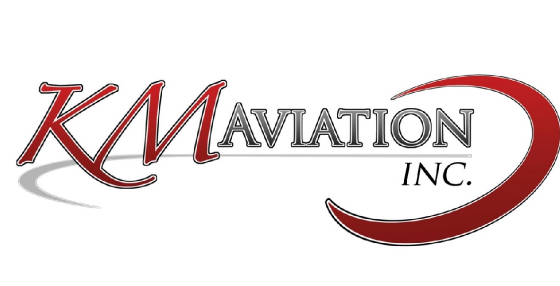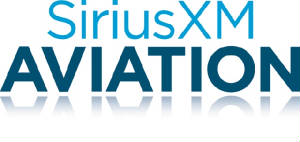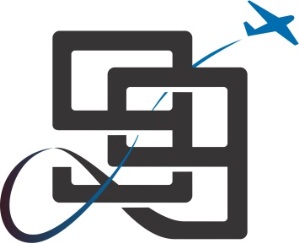|
|
TERRY & THERESA COMPLETE CAMI PHYSIOLOGY TRAINING
AT THE FAA BUILDING IN OKC Sunday, October 21st: The plan was to depart Monday for a Tuesday and Wednesday
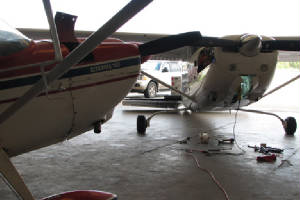 class at CAMI at the FAA Facility in Oklahoma City. But in checking the weather, it was apparent that a cold front was pushing
east from Denver, and atropical low was heading north from the Gulf of Mexico and they were forecast to collide in my approximate
path Monday. Plan B. Leave Sunday, early, ahead of the fronts and make Oklahoma City (PWA) by late afternoon. . . except Wild
Mama was not quite done with her annual until 3:00 p.m. Sunday afternoon. Plan C. Depart Sunday at 3:00 p.m.; get ahead
of the tropicl gook pushing north and go as far as possible yet shy of the meeting with the cold front from Denver. Finally,
a plan that worked. class at CAMI at the FAA Facility in Oklahoma City. But in checking the weather, it was apparent that a cold front was pushing
east from Denver, and atropical low was heading north from the Gulf of Mexico and they were forecast to collide in my approximate
path Monday. Plan B. Leave Sunday, early, ahead of the fronts and make Oklahoma City (PWA) by late afternoon. . . except Wild
Mama was not quite done with her annual until 3:00 p.m. Sunday afternoon. Plan C. Depart Sunday at 3:00 p.m.; get ahead
of the tropicl gook pushing north and go as far as possible yet shy of the meeting with the cold front from Denver. Finally,
a plan that worked.Because the early leading edges of the tropical system moving up from the Gulf were already being seen in the panhandle of Florida, I knew that a VFR flight the whole way would not be possible so I filed IFR. Once picked up by radar of Miami Center, it was not until some 3 hours later that I saw the ground. Wild Mama was in and out of the soup the whole way but with a killer tailwind. (I am beginning to like this tailwind stuff.) With a new cylinder, rebuilt mags, a re-built front strut and a fresh annual, I was quite vigilent about the gauges and mechanical condition of Wild Mama; but she was performing very well until we got in the Tallahassee region. The TIS started acting up: "BONG: Traffic". The MX20 goes red. Two bogies 8 o'clock, less than 1 mile. There is nothing on the TCAD. I clear the screen. Thirty seconds later: "BONG: Traffic". Same bogies. Wild Mama is in the soup. Surely there is nothing. I clear the screen. Thirty seconds later: "BONG: Traffic". OK. Now this is annoying; but so went this anomolie for the next hour or so . . . every 30 - 60 seconds: "BONG: Traffic". "BONG: Traffic". "BONG: Traffic". Finally: "Traffic not available". Ahhh, music to my ears! Landing in Meridian, MS was a real thrill: first, because it was time to stop after 3-1/2 hours and second because of the good ol' Southern Hospitality which greeted us at the pumps. Now this is an FBO who wants your business. Cheap fuel, FREE ice cream and hot dogs, nice weather planning station and friendly, helpful folks to greet you. A definite must stop. By this time darkness was eminent and I wanted to get underway as I finally had some nice clear skies and some remaining tail winds. There was to be a major wind shift with the advancing cold front and I wanted to get as far along as possible to make the last leg on Monday, if any, as short as possible. I filed IFR again just because of flying into unfamiliar territory at night. The night was quiet; the favorable tailwind had already started to shift; the sun was setting ever so slowly behind a cloud leaving the luscious orange glow in its wake. The radio crackles: ". . . HIWAS information available for . . . southern Kansas and Oklahoma . . ." Hmmmm. That sounds kind of close to where I am going. Better check it out. I scroll out on the MX20 to catch the NEXRAD image of the front chock full of lightening bolts; reds, oranges for precipitation and just about ready to over-run PWA. I check the charts and find a suitable alternate to put down early. There are no heroes when a storm like that is in your path. I put down in McAlester, OK: nice approach, town near by, facilities and only 100 miles from PWA so an easy drive, if need be the following day, if the weather parks itself over the area. Wild Mama and I rest for the evening. Monday morning and I anxiously turned on the local weather to see if my decision was a good one. The temperature outside was 48 degrees - a far cry from the 80's the day before. Reports were filtering in of "quarter-sized hail" blanketing the area of PWA during the night time hours. Wild Mama was spared the golf ball treatment and was safe and sound! I was happy. The remainder of the morning and in to the early afternoon was a waiting game. The hail and convective activity were gone but the rains and winds were unrelenting. We waited until nearly 1:00 p.m. before there was a break enough in the rain to depart and get to F29, Page field, where Theresa had arranged a hanger for Wild Mama to spend her time in OKC. Many, many thanks to Tom WIlliams for the much appreciated shelter. We departed in the soup - a thick, wet cloud layer - and remained there until we broke out 1300' above the runway on the GPS approach. All went flawlessly but the wind was still howling - blowing hard and very gusty. I had to park with the wing in the wind and could not let go of the yoke to get out of the plane to tie down the wing, so a helper came to my aide. I unloaded in the FBO and got the hanger. Safe and sound. CAMI PHYSIOLOGY TRAINING: Bo gave us a great presentation in the morning on 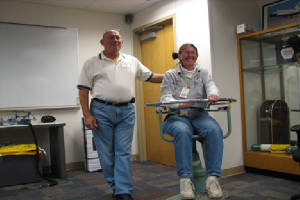 spacial disorientation. We took turns in the spinning chair and saw how the hairs in the ear impact our balance and perception
of what our bodies are really doing; how it relates spacial disorientation. We took turns in the spinning chair and saw how the hairs in the ear impact our balance and perception
of what our bodies are really doing; how it relates 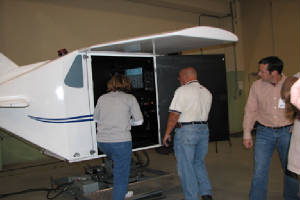 to aviation and what we need to be aware of as the PIC. We all took a spin through the GAT-2 Trainer to see exactly
how well (or poorly in my case) we performed while feeling the effects of spacial disorientation. Note to self: auto-pilot!
The afternoon found us studying all about hypoxia. Although I have studied about hypoxia as it relates to to aviation and what we need to be aware of as the PIC. We all took a spin through the GAT-2 Trainer to see exactly
how well (or poorly in my case) we performed while feeling the effects of spacial disorientation. Note to self: auto-pilot!
The afternoon found us studying all about hypoxia. Although I have studied about hypoxia as it relates to 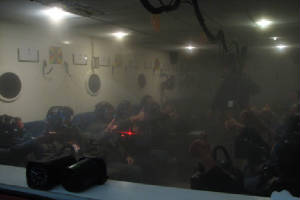 scuba diving, Bo gave us a much more indepth understanding of the different kinds of hypoxia, why and how they form. Then
we all went for a ride in the altitude chamber. What an experience. We did a rapid decompression and all felt the
effects of oxygen depravation for up to 5 minutes at 22,000'. It was amazing to see how some of us "looked normal"
but had great difficulty in performing even the most simple tasks. Theresa did great, lasting 5 minutes before having to don
her mask. scuba diving, Bo gave us a much more indepth understanding of the different kinds of hypoxia, why and how they form. Then
we all went for a ride in the altitude chamber. What an experience. We did a rapid decompression and all felt the
effects of oxygen depravation for up to 5 minutes at 22,000'. It was amazing to see how some of us "looked normal"
but had great difficulty in performing even the most simple tasks. Theresa did great, lasting 5 minutes before having to don
her mask.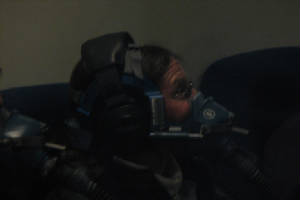 I was slightly over 3 minutes, very dizzy, heart pouinding and reacting and functioning VERY slowly. What an eye opener.
We also saw how lack of oxygen effects our night vision and how well things cleared up with the use of the oxygen again. We
all graduated with (pardon the pun) flying colors! I was slightly over 3 minutes, very dizzy, heart pouinding and reacting and functioning VERY slowly. What an eye opener.
We also saw how lack of oxygen effects our night vision and how well things cleared up with the use of the oxygen again. We
all graduated with (pardon the pun) flying colors!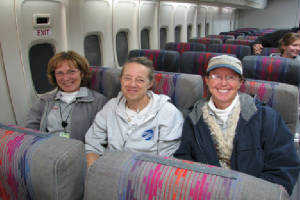 CAMI SURVIVAL TRAINING: Wednesday, Eric came in to train us in post crash survival. As our new group of classmate began to arrive, familiar faces filled the room: KC State racers joined Team Wild Mama and Denise Waters. In all, we had 7 ARC racers all end up together. Today was going to be fun. 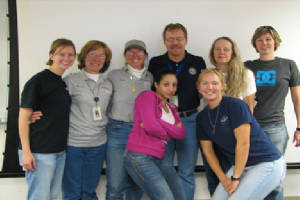 The morning found us learing about setting yourself up for a succesful rescue and the pre-flight planning and preparation. Do you have a survival bag? Where is it located? What is in the bag? When do you carry 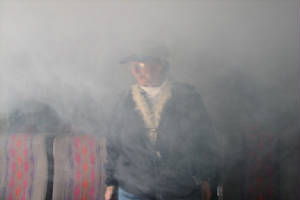 it? Well that was a revelation: we have a great water ditching survival kit which could be used just as well
on land and never carry it over land. Duh. Lots of great information to consider. We followed that with a trip to the smoke
chamber where we exited a commercial airliner it? Well that was a revelation: we have a great water ditching survival kit which could be used just as well
on land and never carry it over land. Duh. Lots of great information to consider. We followed that with a trip to the smoke
chamber where we exited a commercial airliner 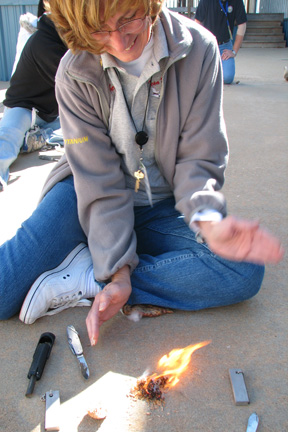 filled with smoke. That track floor lighting really makes a difference. We also learned about combustibles in planes and just
how fast one will become fully engulfed in flames. filled with smoke. That track floor lighting really makes a difference. We also learned about combustibles in planes and just
how fast one will become fully engulfed in flames.After lunch was more post crash survival. You have successfully crashed the plane and lived. You have sent out the rescue signals, etc. Now you have to SURVIVE until the rescue arrives. What do you do? How do you handle 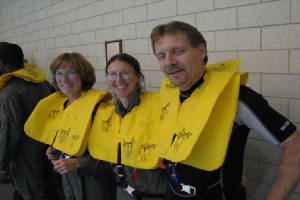 first aide? What are your survival priorities? We learned how to make fire out of a 9v battery! Our final project of the course
was the water ditching training. We all doned out flight suits, life vests and exited the crashed commercial airliner. We
had the opportunity to get in the raft and see the graces involved with raft entry and we concluded with the upside-down water
evacuation chair where we had to extracate ourselves while flipped up-side down first aide? What are your survival priorities? We learned how to make fire out of a 9v battery! Our final project of the course
was the water ditching training. We all doned out flight suits, life vests and exited the crashed commercial airliner. We
had the opportunity to get in the raft and see the graces involved with raft entry and we concluded with the upside-down water
evacuation chair where we had to extracate ourselves while flipped up-side down 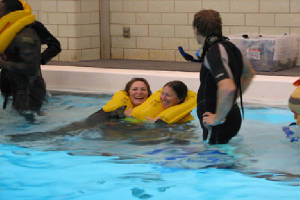 under the water. under the water.This 2 day experience was really fabulous and our thanks to the FAA and CAMI for producing and hosting this FREE TRAINING for pilots. Theresa and I encourage everyone to make it a point to come to the seminar and we promise you will learn a lot about yoursleves and your environment to aide in making you a safer pilot. For more information: 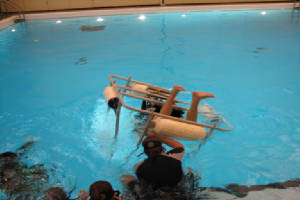 http://www.faa.gov/about/office_org/headquarters_offices/avs/offices/aam/med_pilots/ps_training/ Thursday, October 25th: With safety training behind us, Theresa had another surprise planned for my visit - a visit to TRACON and the tower at Will Rogers World Airport (OKC). Theresa is leading a training class for instructors of aviation English and, as part of the training, took the class to see the ATC side of things. This was fascinating from a pilots' point of view as we hear everyone; but do not have the slightest clue of what ATC sees as they are speaking with us. "I see a primary target" has an entirely different meaning to me now as I know what that ATC professional is actually seeing, and can begin to appreciate some of the difficulties which he/she might be experiencing at that moment. It was a privilege to be able to meet and speak with Gerald Boyd and his team of professionals to learn about the training, working issues and other considerations that ATC has in handling air traffic which will help me form a better working relationship with ATC as my partner in air safety. With my time in Oklahoma City coming to a close, I have to bid a temporary farewell to all of my new friends and associates at the FAA and to thank them for extending to me, and other pilots, the hospitality to educate both pilots and the flying public in the various issues involved in the complex world of air travel today. El Paso: With clear skies and light winds, Theresa and I departed the OKC area for El Paso for our race meeting. The "plan" was to file IFR so we would have help on the traffic and Theresa would 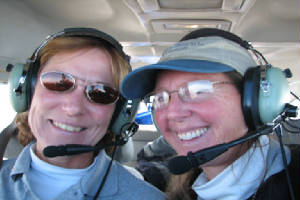 concentrate on learning the finer points of Wild Mama. So much for plans . . . concentrate on learning the finer points of Wild Mama. So much for plans . . .The departure seemed normal enough: I made the radio calls from the non-towered airport and tried to call for the IFR clearance from the air. No-one would answer me from OKC approach, so Theresa tried. Instantly, ATC rattled off the whole IFR clearance (did we mention Theresa is not instrument rated yet?) and Theresa was faced with all the radio duties; including reading my short-hand and reading back a clearance which she did not fully understand. I was screaming over the drone of the engine and the headsets so she could hear as she did not understand my short-hand. "Depart via Will Rogers 262 radial, 39 DME then direct Hobart" was not even close to looking like what I had written. I turned right to make the intercept and Theresa slogged her way through, doing an outstanding job, I might add. 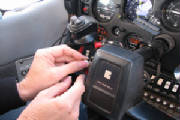 Theresa continued with the radio all the way to El Paso as we had diagnosed the radio problem as a broken PTT switch wire
in my yoke. Our learning session went from systems to IFR radio procedures but it was a great learning experience none-the-less. Theresa continued with the radio all the way to El Paso as we had diagnosed the radio problem as a broken PTT switch wire
in my yoke. Our learning session went from systems to IFR radio procedures but it was a great learning experience none-the-less.By Sunday morning, with a productive meeting behind us, we departed El Paso to make it back to the OKC area so Theresa and Mike could depart for Indiana, and I could head out to the cabin in Tennessee. Fortunately for us, Theresa brings with her the luck of the tailwinds. We made a quick trip back, with a very rapid turn around and I was back in the air for a 4 hour run to Sparta, TN. This day was beautiful and the night flight was even more spectacular: 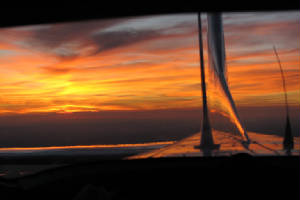 smooth air, clear skies, a magnificant sunset and big orange moon-rise with every light on the ground and every star in the
sky visible for 50 miles. My evening delight ended all too soon as I landed in SRB around 2200 local time. smooth air, clear skies, a magnificant sunset and big orange moon-rise with every light on the ground and every star in the
sky visible for 50 miles. My evening delight ended all too soon as I landed in SRB around 2200 local time. The stay in Tennessee was brief and I was back in the air by 1400 the next day. The sky was still good for a VFR departure but turned solid white after my fuel stop in Alma, GA, 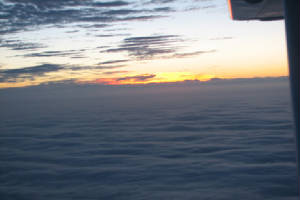 leaving me with VFR on top then solid soup for the remaining leg home. After 23 hours of total flight over the last
9 days in all sorts of weather, with all sorts of minor glitches, I could only think as I landed: "Where can I go next?". leaving me with VFR on top then solid soup for the remaining leg home. After 23 hours of total flight over the last
9 days in all sorts of weather, with all sorts of minor glitches, I could only think as I landed: "Where can I go next?". |

